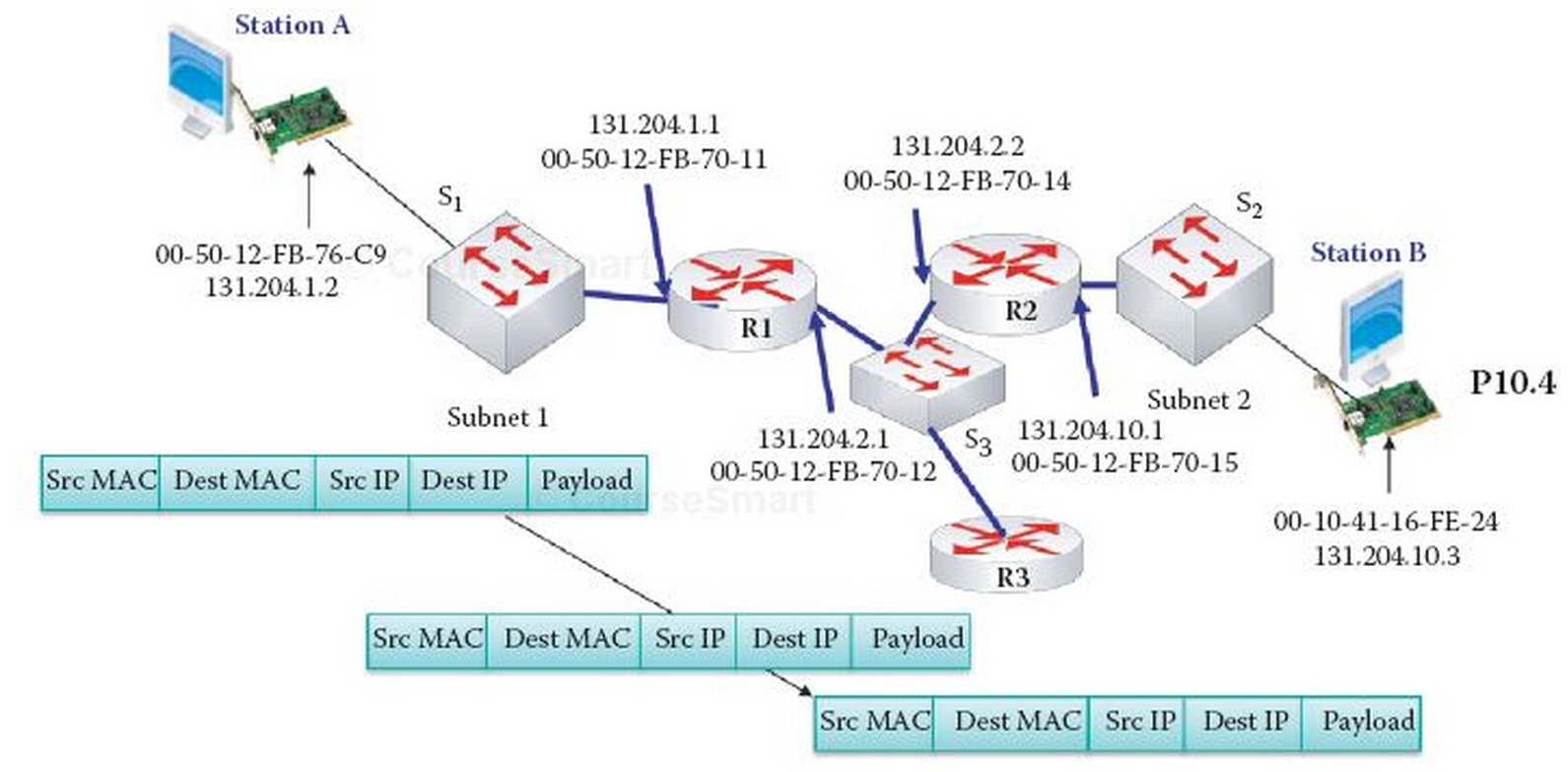Network Layer: IPv4 and Routing
Exercise 10.4, pp. 484
Fill in the blanks for the source and destination IP addresses as well as source and destination MAC addresses for a frame traveling from Station A to Station B in the network below.

Exercise 10.7, pp. 485
Assuming all switches (represented as rectangular boxes) are layer-2 switches, determine the number of subnets in
the network below.

Exercise 10.8, pp. 485
Assign IP addresses and subnet masks to the router interfaces that do not have IP addresses in the network from Exercise 10.7 above.
Exercise 10.9, pp. 485
Determine the IP address and subnet mask for the new subnet formed by combining the
subnets 131.204.2.0/24 and 131.204.3.0/24 from
Exercise 10.7. In addition, assign the gateway IP address for the new subnet.
Exercise 10.10, pp. 485
An external host with IP address 69.1.1.7 sends an HTTP request to a web server behind the NAT router shown in the figure below. A fixed mapping is used to open a port for the remote HTTP request. Determine the NATP table inside the NAT router and list the step-by-step development of the NATP table for both an incoming HTTP request and an outgoing HTTP response.

Exercise 12.4, pp. 569
Given the network below, illustrate the development of the OSPF routing table for router W in a step-by-step manner.

Exercise 12.7, pp. 570
Illustrate the step-by-step development of the RIP routing tables for the network below.

Exercise 13.12, pp. 609
Determine the forwarding table for router R1 in the network below.

Submission
You need not submit solutions to these exercises. They are meant to prepare you for the exam.






